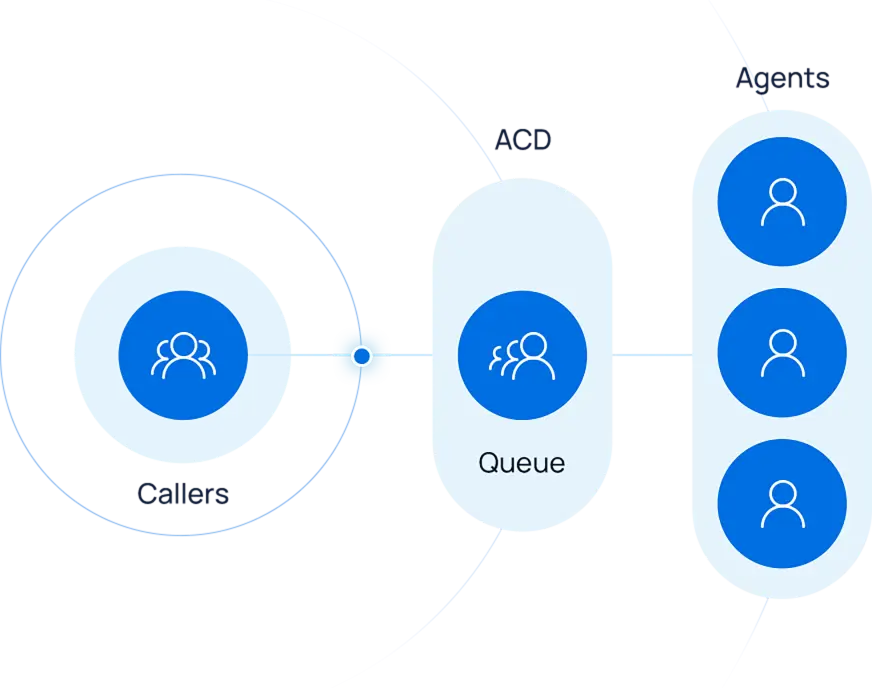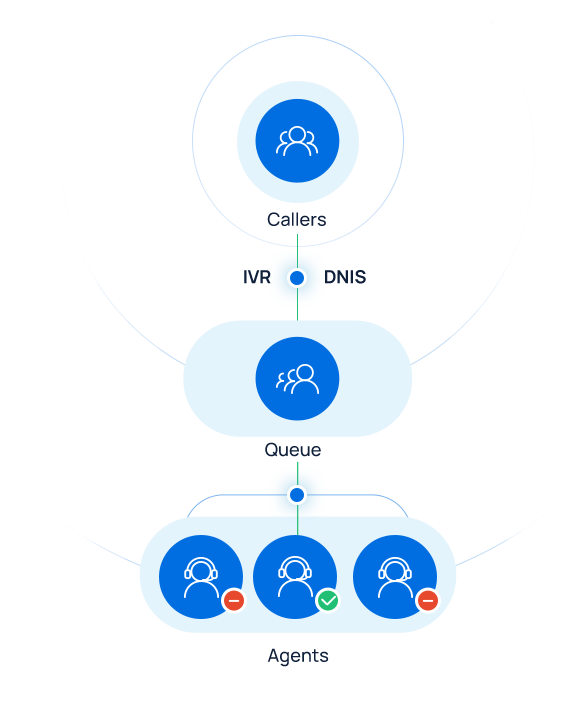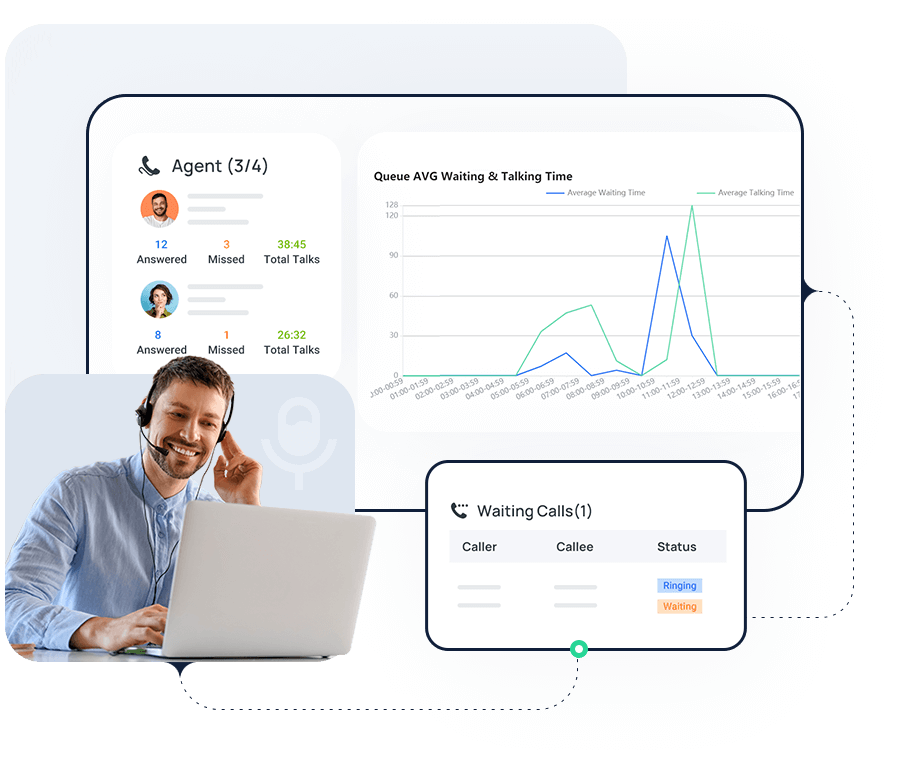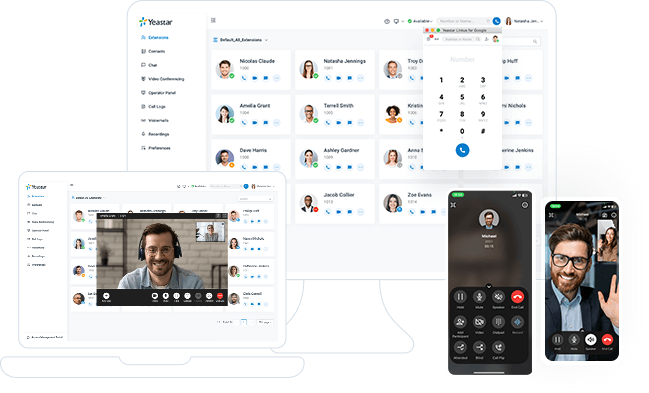Those who have experience working in a call center understand the challenges that arise when multiple customers call simultaneously. How do you decide which caller to attend to first? How to match customers with the right agents who are most appropriate to handle their inquiries?
A robust automatic call distribution system (ACD), also known as automatic call distributor, is one solution that call centers employ to avoid such issues. This article takes a look at what ACD is, discussing how it works, and how it can boost call center metrics and benefit your business as a whole.
What is ACD (Automatic Call Distribution)?
ACD stands for Automatic Call Distribution. It’s a feature in VoIP phone system (PBX) or call center software that receives inbound calls and distributes them to available agents or departments based on predefined rules such as date & time, caller input, agent skill sets, etc.
The goal of the feature is to help inbound call centers automatically sort and manage high volumes of calls to reduce call wait time. It also enhances customer experiences by ensuring they are routed to the most appropriate agents as fast as possible.

What is the difference between ACD and IVR?
ACD and IVR are two related but distinct technologies. Interactive voice response (IVR) enables callers to interact with pre-recorded prompts and “tell” the system what they need by keypad input. It’s used to collect caller data and classify the type of inquiry.
On the other hand, ACD uses intelligent call routing algorithms (based on the caller data collected from IVR & other predefined call routing configurations) to direct the call to the best-suited available call center agent.
Together, they enable quick, efficient resolution of calls based on context and logic, greatly enhancing the customer experience in your call center.
How does Automatic Call Distribution work?

An automatic call distribution system optimizes call routing using a multi-step process:
Step 1: Classify Incoming Calls.
The ACD handles simultaneous call distribution by using customer data collected from IVR and DNIS (Dialed Number Identity Service). It identifies the caller’s needs and classifies them based on the data. For example, after-service support calls are flagged differently than product inquiries. The preference for the English language is marked differently compared to Spanish.
Step 2: Call Queueing.
Then, the ACD system sorts the callers into waiting lists and determines the order of the queue based on several factors such as Caller wait time, Agent skill level, Agent availability, Agent workload (number of calls already assigned to an agent). For example, your VIP callers may be given higher priority than others based on the priority queue configuration.
Step 3: Call Routing & Agent Connection.
The last step is to connect the caller to a live agent. In cases where the agents are busy, callers may hear hold music or informational messages while waiting. The ACD system may also offer an automatic callback option, allowing callers to reserve their position in the queue without having to wait on hold.
6 Types of ACD Distribution Methods
The way an automatic call distributor routes your calls depends on the distribution method you selected for your phone system. Each type of distribution method has its pros and cons. Some are designed to speed up the call flow while some are used to balance the agent workload. Here are 6 key ACD distribution methods to choose from:

Key Features of ACD Systems
Besides the IVR and advanced call distribution methods (or call routing strategies) mentioned above, there are several ACD-related features that you can leverage to further improve productivity for call center or contact center.

What are the benefits of ACD solution?
Automatic call distribution makes you more responsive to customer calls. Even with a high call volume, customers can still get in touch with the right agent as quickly as possible. Generally, a call center with automatic call distribution offers the following benefits:
Improved Customer Satisfaction: ACD systems route calls to the most suitable agents, reducing wait times and enhancing the overall customer experience.
Increased Efficiency: By directing calls based on agent availability and skill set, ACD systems help manage high volumes of incoming calls more efficiently.
Cost Reduction: Efficient call routing means agents can handle more calls in less time, which can lead to a reduction in operational costs.
Enhanced Productivity: Agents can focus on more complex tasks as automatic call distributor handle routine calls and provide self-service options for customers.
Better Workload Management: Calls are distributed evenly among agents, preventing overload and ensuring a balanced workload.
Frequently Asked Questions

Reliable Call Center Software
Available both in the cloud and on-premises, Yeastar P-Series Phone System unites calls, video, omnichannel messaging, integrations and more in one simple system for your seamless communications anywhere.
Get started with 30-day free trial
Create your Yeastar phone system in minutes & see what all-in-one communications can do for your business today.
X
